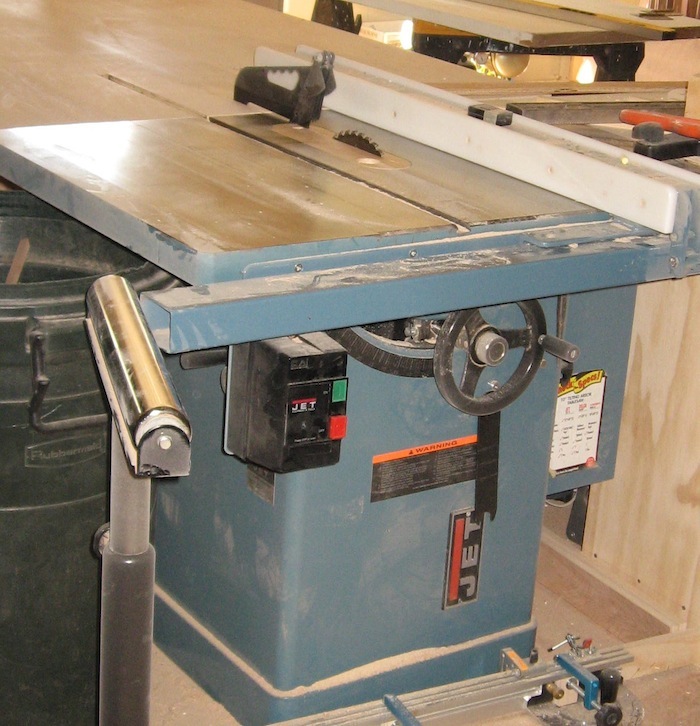Most woodworkers understand the need to avoid table saw kickback. However, it seems that often they don’t have a good idea of what kickback actually is. Because of this dangerous issue, I’ll explain kickback, its causes and how to prevent it from happening in the first place.

Photos via wooden-box-maker.com
What is kickback?
There are a couple types of kickback.
The first is when a small off-cut dances into the blade and is whipped back at you. I have seen a piece of plywood stick in the wall with the speed of that kickback. (Another reason to wear safety glasses!) When I have small off cuts, I lower my blade periodically and sweep them away — using a push stick, thank you very much!
The second type of kickback happens when the blade grabs the board you are cutting and sends it flying. That is what this post will focus on.
Danger of kickback
The danger of kickback is that when the board is grabbed by the blade, it usually kicks away from the fence, swivels into the blade and is then lifted and hurled back at you. This occurs way too fast for any reaction on your part. You won’t even know what happened, much less have time to pull your hand back or step away.
You don’t want your hand anywhere near kickback, especially the swiveling into the blade part. This is the main reason for using a push stick. Kickback is how people end up loosing fingers. It’s not because they were clumsy or their hand drifted into the blade.
In the photo below it may look like there is plenty of room for my hand. Wrong. If anything happened my hand would end up in the blade. That photo was staged with the saw off. (Although you might notice that out of habit, even with the saw off, I tucked my little finger out of the way to ride on the fence.)

Reasons for kickback
A common reason kickback occurs is tension in a board. As the wood is cut, the tension keeps the kerf from fully opening. This causes the end of the cut to pinch together trapping the blade (as in the sketch below) and the wood comes at you with incredible speed.
The opposite can also happen where the tension causes the cut to actually pop apart before the blade has finished the cut. This isn’t as dangerous because the wood is moving away from the blade and not into it, but it is still unnerving.

Another reason kickback might occur is if your board is warped or twisted. If it doesn’t stay tight to the fence the wood can drift into the blade at an angle to your cut, again, causing the blade to grab. For that reason you should make sure your wood is properly milled before you cut it on the table saw (the bandsaw is a much safer tool for rough lumber).
Preventing kickback
In general, most of table saw safety techniques will be aimed at helping to prevent kickback.
Beyond that, a riving knife is useful. It’s purpose is to hold the saw cut open, so if a board does pinch at the end it pinches the riving knife, not the blade.

Unfortunately, in the US, the riving knives and blade guards that come with a new saw tend to be awkward and difficult to use and they are often removed. For some saws, you may be able to find an after-market riving knife. In the above photo you can see an example on my saw. I removed it for clarity in the other photos. I encourage you to look around for one for your saw if you aren’t satisfied with the one that came with it.
The main thing to remember is to be prepared, so if kickback does occur, the damage is to a push stick and not to you.

Share tips, start a discussion or ask one of our experts or other students a question.
No Responses to “Table Saw Kickback: What Is It? How Can It Be Prevented?”